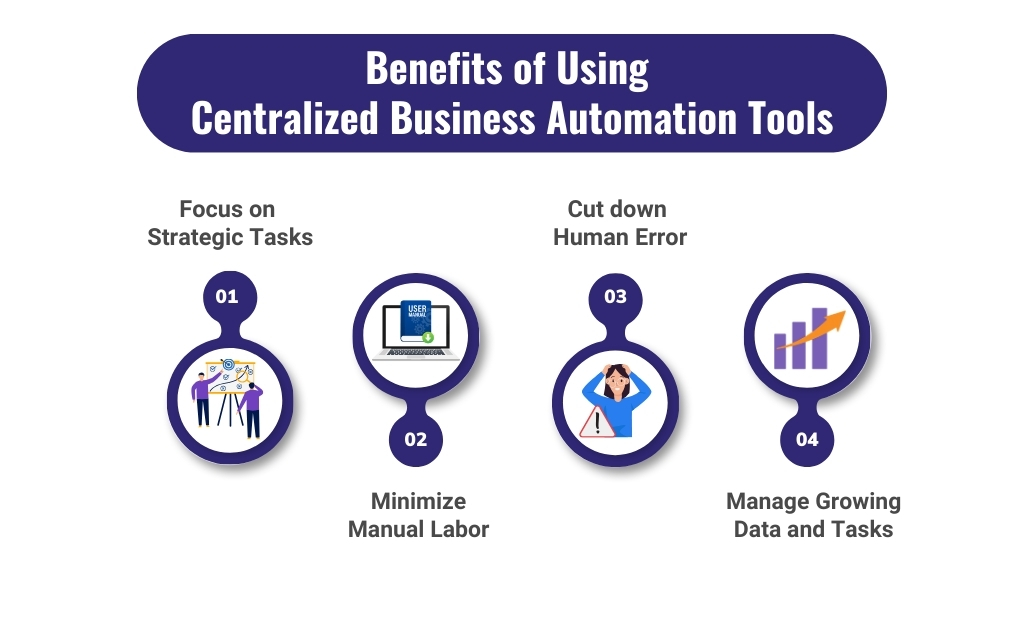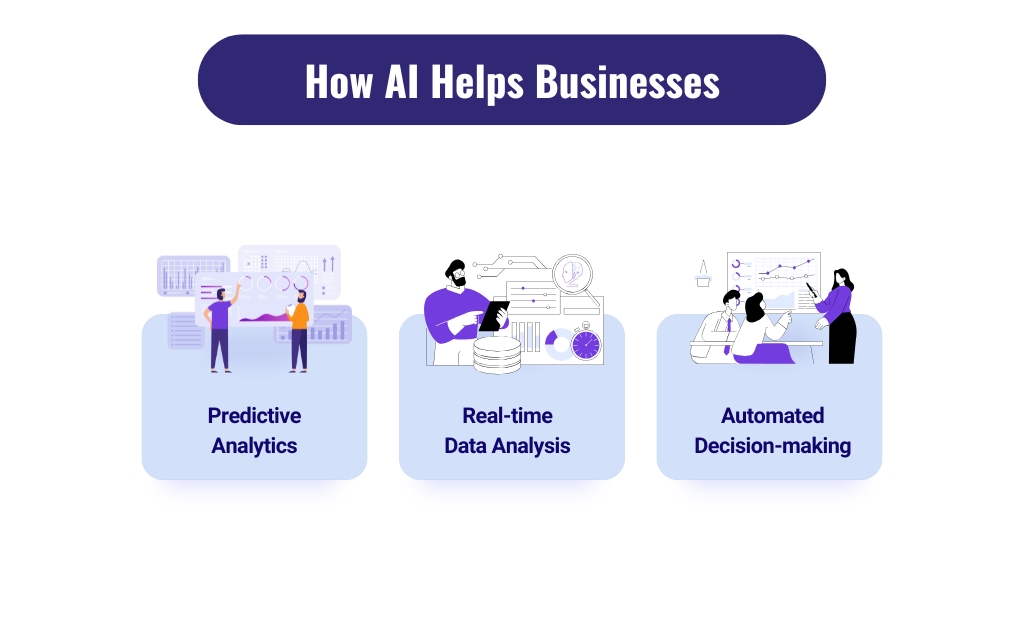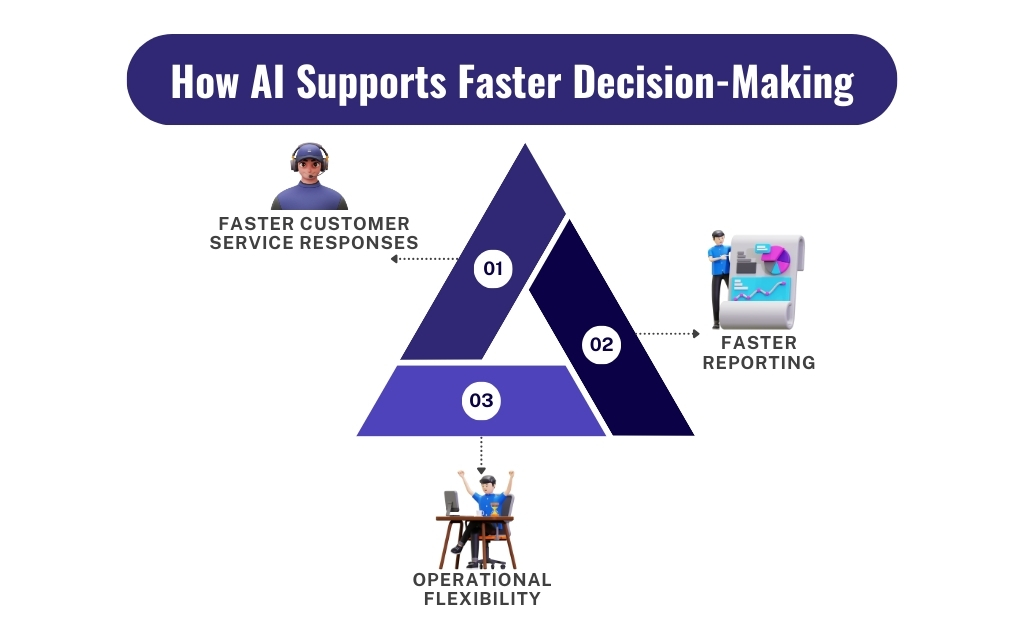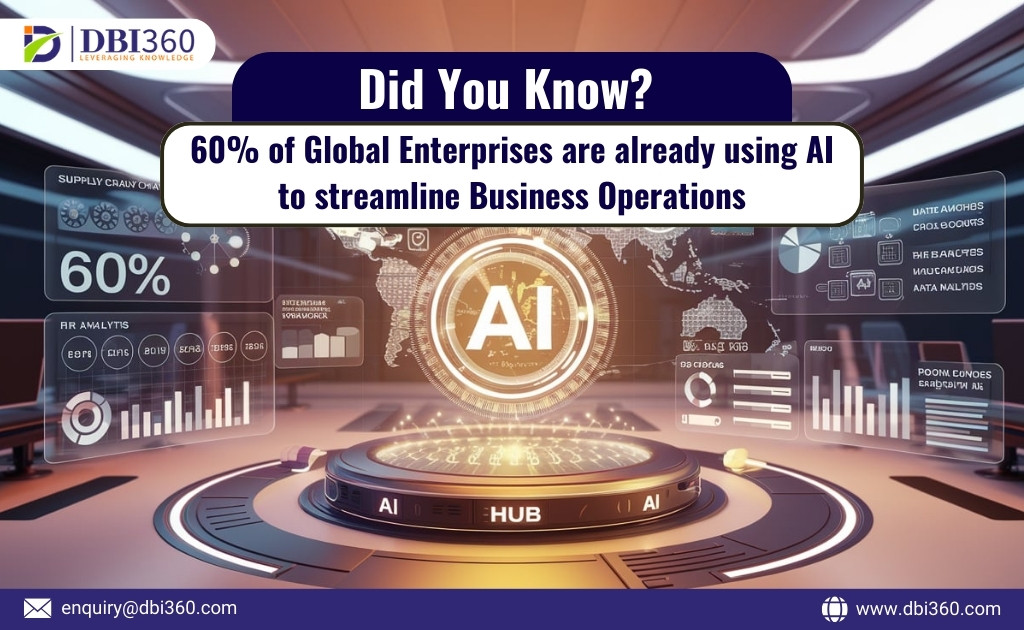As the world continues to evolve at a rapid pace, businesses are constantly striving to improve efficiency and maintain competitiveness. As organizations face mounting pressure to meet customer demands and adapt to rapid technological advancements, traditional business processes are increasingly seen as barriers to growth. To remain agile, businesses must rethink their operational strategies and adopt more efficient systems.
This is where AI-driven enterprise platforms and centralized business automation tools come into play. By integrating AI and automation into everyday operations, businesses can streamline processes, enhance productivity, and unlock new levels of performance.
In this blog, we will explore how businesses are transitioning from manual operations to automated systems and how AI-driven solutions are improving operational efficiency.
Transforming Operations with Centralized Business Automation Tools
In many organizations, routine tasks such as data entry, report generation, and workflow approvals still rely heavily on manual labor. These processes are often slow, error-prone, and inefficient. As businesses grow, these inefficiencies can snowball, leading to missed opportunities, slow decision-making, and frustrated teams.
However, centralized business automation tools are changing the landscape of business operations by simplifying these processes. These intelligent systems automate manual tasks, such as:
- Data entry and processing: AI can extract, organize, and analyze data from various sources in real time.
- Customer interactions: Automated chatbots and AI-powered systems can handle customer service queries without human intervention.
- Document generation and workflow management: AI systems can generate reports, process approvals, and track document status without manual input.
By shifting these tasks from human hands to automated systems, businesses not only improve operational efficiency but also reduce the risk of human error and ensure consistency across operations.
Benefits of Using Centralized Business Automation Tools:
- Time savings: Automating routine tasks allows employees to focus on more strategic activities.
- Cost efficiency: Reduces the need for manual labor, saving costs on operational overheads.
- Accuracy: AI reduces human error by following precise, pre-defined rules and logic.
- Scalability: Automation tools can handle increasing volumes of data and tasks without additional strain on resources.

The transition from traditional, manual workflows to AI-driven automation is essential for businesses looking to scale efficiently and remain competitive.
Maximizing Productivity with AI-Driven Enterprise Platforms
One of the most compelling reasons to integrate AI-driven enterprise platforms into your business is the potential to boost productivity. AI technology can help businesses eliminate bottlenecks, improve workflow speeds, and accelerate decision-making processes.
AI helps businesses in the following ways:
- Predictive analytics: AI-driven systems analyze historical data and offer predictions for future trends. This enables businesses to make proactive decisions rather than reactive ones.
- Real-time data analysis: AI systems process large volumes of data instantly, providing businesses with actionable insights in real time.
- Automated decision-making: AI can make decisions based on predefined criteria, ensuring faster responses to market changes, customer requests, or operational needs.
With AI managing the heavy lifting of data analysis and decision-making, employees are freed to concentrate on more creative, strategic, and value-driven activities, allowing for a significant increase in productivity.

How AI Reduces Bottlenecks and Supports Faster Decision-Making:
- Faster customer service responses: AI-powered systems can answer customer queries instantly, improving customer satisfaction.
- Faster reporting: AI systems automatically compile and analyze data, reducing the time spent on report generation.
- Operational flexibility: AI platforms quickly adapt to changes in demand or workflow, ensuring that businesses can respond faster to external factors.
The ability to make decisions and implement changes swiftly is a critical competitive advantage in today’s fast-moving business landscape.

The Role of Centralized Business Automation Tools in Streamlined Operations
A key factor in maximizing business efficiency is the ability to centralize data and operations. With the growing complexity of modern enterprises, many businesses are struggling with fragmented systems that create silos of information, leading to inefficient communication, delayed decision-making, and duplicated efforts.
By implementing centralized business automation tools, companies can consolidate their operations into a unified platform. This approach brings several advantages:
- Improved communication: Centralized platforms provide a single source of truth for all teams, enhancing collaboration across departments.
- Better data management: A unified system allows businesses to track and analyze data from various sources, providing insights that can guide decision-making.
- Reduced redundancy: By eliminating duplicate tasks and systems, businesses can operate more efficiently and at a lower cost.
- Faster information flow: Centralized systems allow for real-time updates and faster access to critical data, improving response times.
Real-world examples of companies successfully implementing centralized systems include large retailers that consolidate inventory, customer data, and order management into one platform, allowing them to better manage their supply chain and customer service operations. Similarly, financial services firms use centralized systems to track transactions, monitor compliance, and manage risk across various divisions.
By centralizing business operations, organizations can achieve better coordination, eliminate inefficiencies, and increase their ability to scale effectively.
Conclusion
AI-powered automation tools are not only about improving current processes but also about preparing your business for future growth. As new challenges emerge, these systems will allow businesses to adapt quickly, optimize their resources, and stay ahead of the curve.
Embracing AI and automation is a strategic investment in the future of your business. With the right tools, your organization can operate more efficiently, deliver superior customer experiences, and drive growth. As you look toward 2025 and beyond, consider how integrating AI into your operations can future-proof your business and ensure long-term success.
If you’re ready to take the next step, DBI 360 offers robust AI-driven enterprise solutions designed to streamline your operations, improve data management, and optimize business processes across the board. For more information, visit DBI360 now!

